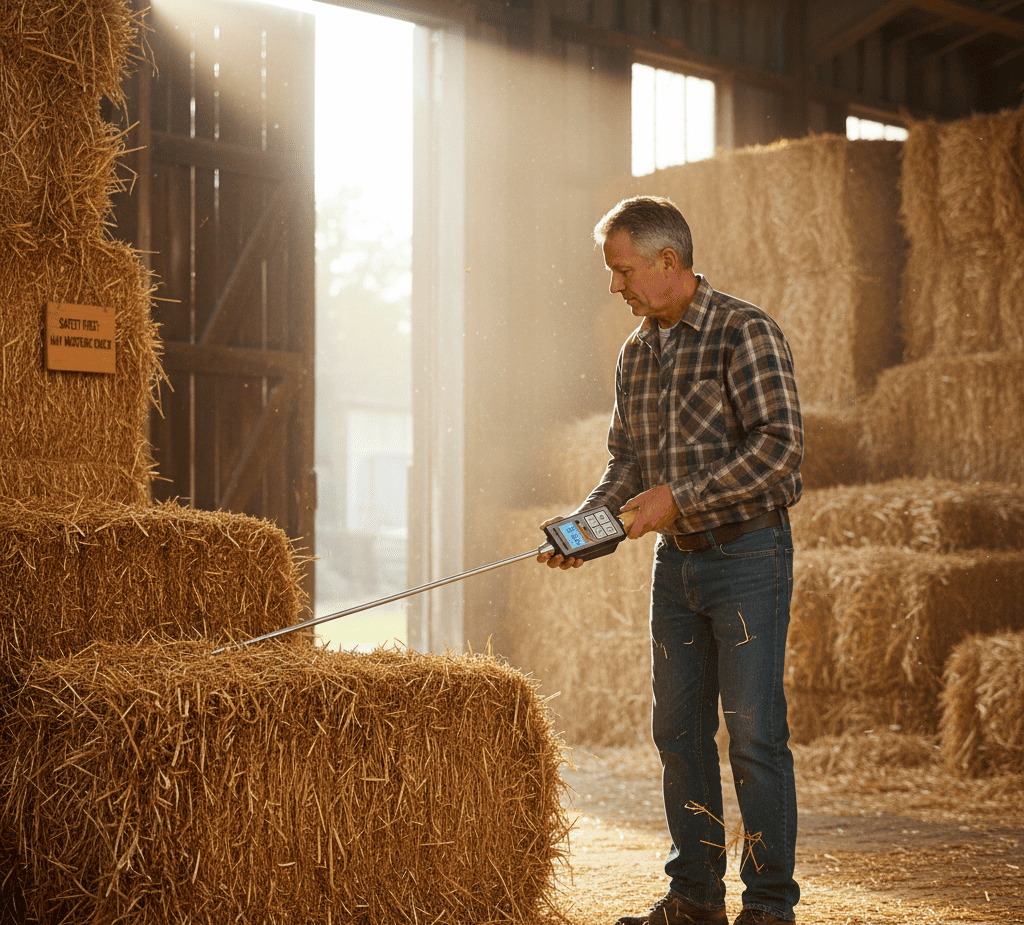Grass and Straw moisture meters
How to Check Moisture Content to Prevent Hay and Straw from Overheating and Deterioration
Hay and straw, though appearing dry on the outside after sun-curing, can still retain moisture in their core. When the moisture content is high, microorganisms inside the straw become active and generate heat. This leads to the discoloration of the straw, a reduction in nutritional value, and poses a risk of barn fire. For an accurate check, the moisture level at the core of the hay bales or large straw bundles must be measured using a device with a deep-penetrating probe. Models like the PCE-HMM are suitable because of their long probe and specialized use for hay and straw. Hay is only considered safe when its moisture content reaches approximately 12 to 15 percent before being baled and moved into storage.

What is the Safe Moisture Content for Storing Paddy and Cereal Grains?
Paddy (rice) and other cereal grains need to reach a moisture content of less than 14% for long-term storage. If this level is exceeded, the grains can easily generate heat and deteriorate when piled up. Before warehousing, it is necessary to measure multiple points in different locations within each batch to ensure the entire quantity of grain is uniformly dry. Devices such as the Draminski GM allow for quick testing across various grain types with high stability. When the required level is met, the grains maintain their quality for a long time and limit the development of mold or weevils.
Reasons Why Agricultural Products Mold Easily Despite Looking Dry on the Outside
Agricultural products like straw, grains, and wood have an internal structure that retains moisture. The surface may be dry, but the core has not yet fully lost its water content. When stored in a warehouse or bundled, this trapped moisture creates conditions for mold to develop. Therefore, visual assessment alone is insufficient; a moisture meter is required to accurately determine the internal condition of the material.
Why Is Moisture Testing by Feel Prone to Error When Purchasing Large Quantities?
When purchasing large volumes, the moisture content between the outer and inner layers of the agricultural pile can vary significantly. Checking by hand or relying on experience only reflects the outer layer and fails to assess the deep-seated core. Even a small discrepancy can reduce the product's value or cause damage during storage. Hence, using a measuring device is the necessary solution to ensure accuracy and avoid disputes during the handover of goods.
The Process of Drying and Moisture Checking to Limit Storage Losses
When drying agricultural products, they must be turned over regularly to ensure uniform dryness across all layers. After drying is complete, they must be allowed to cool down before being bagged or bundled to prevent the trapping of heat and residual moisture. Before storage, the moisture content of each batch must be measured at multiple points. If a portion does not meet the threshold, additional sun-curing or mechanical drying must be applied to bring the entire batch to a safe level. This process helps stabilize quality and minimize risks throughout the storage period.
-
-
-
-
-
-
-
-
-
-
-
-
-
-
-
-
-
-
-
-
-
-
-
-